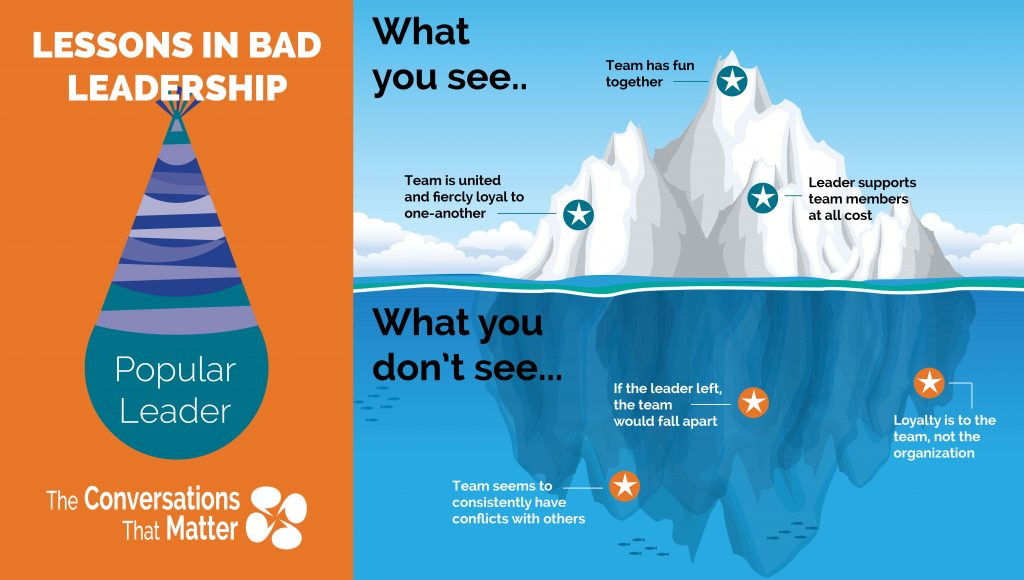
Lessons in Bad Leadership – The Popular Leader
In our previous blog post (HERE), we examined three bad leadership character. In this post, we will dig deeper into the first type – The Popular Leader.
BAD LEADER TYPE #1 – THE POPULAR LEADER
Fact: Good leaders build loyalty to ideas and the whole organization. Bad leaders build loyalty to themselves.
On the surface
Perhaps you have a department or team that seem super strong and well connected. People might even desire to be a part of this team because it feels like they are having a ton of fun. The leader has a bold personality and has the backs of her people at all cost.
Below the surface
This team seems to have “rubs” with someone all the time. And, they band together for strength. There is a lot of internal validation and exaggeration of the “rub” and the person or team it is directed at is clearly outnumbered and outsmarted. The leader is the glue that holds it together and if she left, the team would fall apart.
Why this is bad
When teams of people are working at the pleasure of one person and for the purpose of only reinforcing the strength of that specific team, the organizational ideas/priorities/goals become secondary to the team’s ideas/priorities/goals. The strength of that team becomes the weakness of the organization.
What the experts say:
Patrick Lencioni, in his book Silos, Politics and Turf Wars says, “Silos – and the turf wars they enable – devastate organizations. They waste resources, kill productivity, and jeopardize the achievement of goals.” Further, he explains that it is a leader’s responsibility to break down silos for the sake of the whole organization. When a silo is left unchallenged, that leader becomes where the loyalty lands, rather than to the organizational vision.
Lencioni, in his book The Five Dysfunctions of a Team, goes even further by encouraging managers to see their fellow executive level leaders as their “first team.” When this team is all rowing the ship in the same direction, the teams they manage will be also.
As a leader, how can you make sure this happens:
• Ask yourself, “where does my loyalty lie” and adjust as needed.
• Be transparent with the team you manage. Help them to understand that you are working on behalf of the organization, and they should also.
• Be authentic. When you feel your loyalties are divided, be honest. Get all parties in the same room and be open to productive conflict and new ideas.
• If/when the team you supervise loses out on an idea or direction you wanted to go, support the idea/direction that won. Model what it means to support the whole.
• Reach out beyond the team you supervise and invite others in.
• Set expectations for those you supervise that are clear and point them toward organizational loyalty.
How can you encourage this thinking throughout your organization?
• Share this article – invite a conversation about this.
• Model good leadership and invite others to join you.
• Bring in an expert. The Conversations That Matter offers workshops for team development that help to identify and break down bad leadership behaviors and build stronger teams!
Take action:
